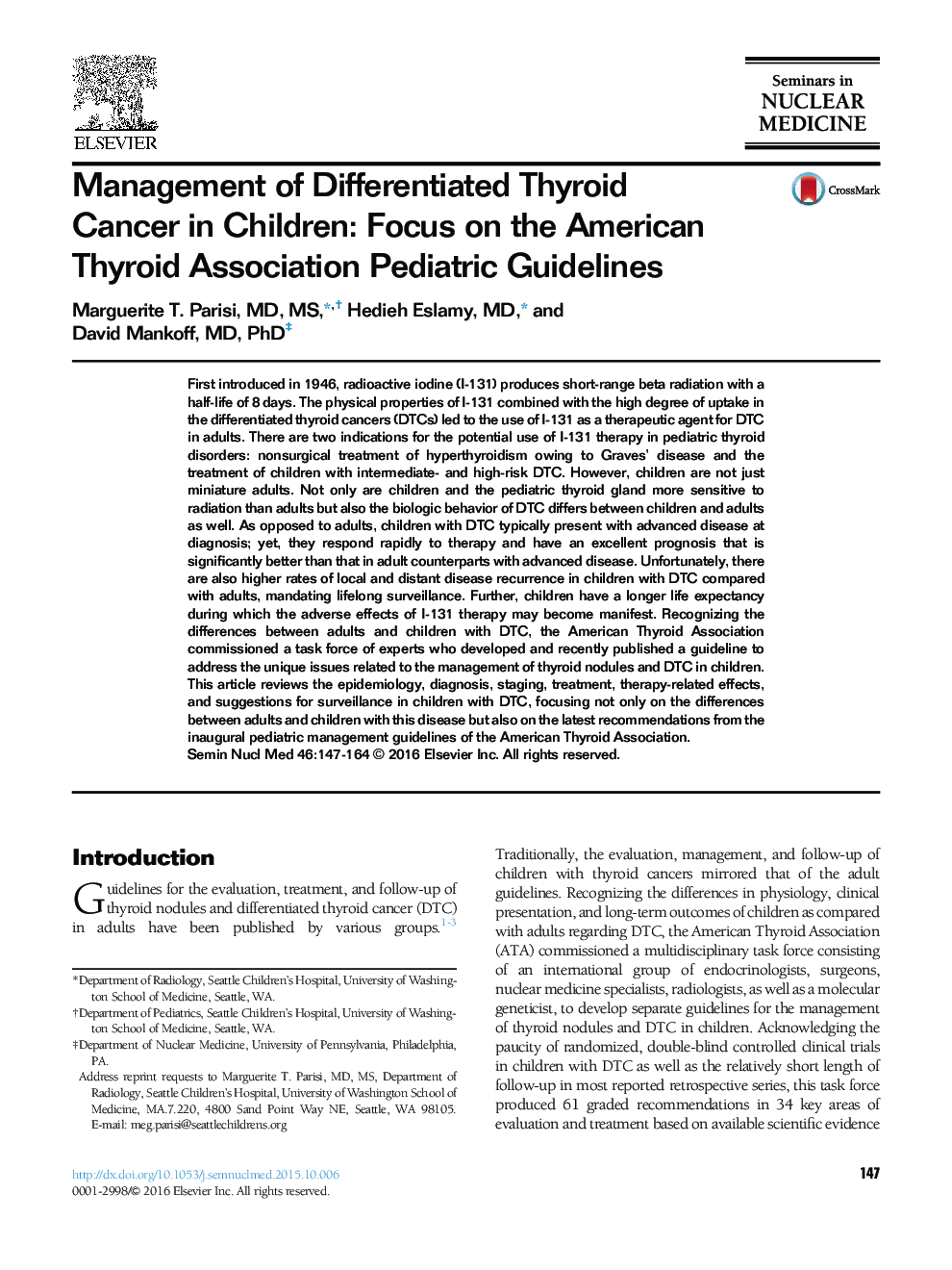| Article ID | Journal | Published Year | Pages | File Type |
|---|---|---|---|---|
| 4250822 | Seminars in Nuclear Medicine | 2016 | 18 Pages |
First introduced in 1946, radioactive iodine (I-131) produces short-range beta radiation with a half-life of 8 days. The physical properties of I-131 combined with the high degree of uptake in the differentiated thyroid cancers (DTCs) led to the use of I-131 as a therapeutic agent for DTC in adults. There are two indications for the potential use of I-131 therapy in pediatric thyroid disorders: nonsurgical treatment of hyperthyroidism owing to Graves’ disease and the treatment of children with intermediate- and high-risk DTC. However, children are not just miniature adults. Not only are children and the pediatric thyroid gland more sensitive to radiation than adults but also the biologic behavior of DTC differs between children and adults as well. As opposed to adults, children with DTC typically present with advanced disease at diagnosis; yet, they respond rapidly to therapy and have an excellent prognosis that is significantly better than that in adult counterparts with advanced disease. Unfortunately, there are also higher rates of local and distant disease recurrence in children with DTC compared with adults, mandating lifelong surveillance. Further, children have a longer life expectancy during which the adverse effects of I-131 therapy may become manifest. Recognizing the differences between adults and children with DTC, the American Thyroid Association commissioned a task force of experts who developed and recently published a guideline to address the unique issues related to the management of thyroid nodules and DTC in children. This article reviews the epidemiology, diagnosis, staging, treatment, therapy-related effects, and suggestions for surveillance in children with DTC, focusing not only on the differences between adults and children with this disease but also on the latest recommendations from the inaugural pediatric management guidelines of the American Thyroid Association.
